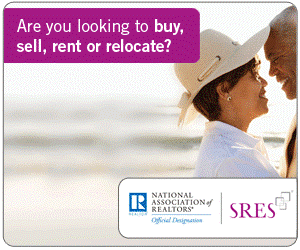Subsidized Rentals: An Affordable Housing Option
It can take time to find housing that is affordable, but the result can be worth the effort. Rents in these communities vary according to ability to pay, based on gross income, (before taxes or Medicare deductions), and assets. Assets include income from Social Security, wages, pensions, welfare, etc. and interest or dividends from IRAs, Certificates of Deposit, stocks, and bonds. With assets such as stocks and bonds only the interest from the asset is counted as income. Assets such as cars and clothing are not counted.
Types of Subsidies
Subsidies for apartments vary, but the most common subsidy requires the renter pay 30% of their gross income for rent. Another subsidy has a rent range, meaning there are lower and upper limits to how much rent you are required to pay based on your income.
Privately Owned Subsidized Housing
Privately owned subsidized housing has many different managers and landlords. Typically buildings are three stories or less and located in the suburbs. You apply to the building of your choice and you can be on several waiting lists at once. Income eligibility varies from county to county. Contact your local Housing Redevelopment Authority, HRA, or Community Development Agency, CDA, for income eligibility; phone numbers at the end of the article.
Public Housing
These apartments are publicly owned and operated by the Minneapolis Public Housing Authority and the St. Paul Public Housing Agency. Some buildings are a mix of people, while others are designated for older adults. Usually the buildings are high rises located in the city near bus lines, clinics, and shops.
Services in Subsidized Housing
Many buildings have a social worker or an on-site service coordinator. This person helps residents access community based services. Some buildings have onsite services and these may be nonmedical or medical. A few buildings have assisted living and/or memory care. Payment for services is on a sliding fee scale.
Building Amenities
Amenities differ from building to building, but all buildings have community and laundry rooms and elevators. Wheelchair accessible apartments are available. Some of the other amenities they can have are: a weekly postal van, bookmobile, milkman, and large community rooms, some equipped with televisions, pool tables, libraries and card and game tables. Some have an “O.K. Care Program”, where residents must hang an I’M O.K. card on their door by a certain time or someone checks on them. While most buildings are located for easy access to bus lines and shopping some have a grocery bus or shopping bus to help residents take care of their shopping needs.
Counties – Housing Redevelopment Authorities and Community Development Agencies
- Anoka, Carver, & Suburban Hennepin & Suburban Ramsey: 651-602-1888
- Chisago & Isanti: 763-689-3883
- Dakota: 651-675-4400
- Scott: 952-402-9022
- Washington: 651-458-0936 press 0
- Cities
- Bloomington: 952-563-8937
- Plymouth: 763-509-5400
- Richfield: 612-861-9770
- St. Paul: 651-298-5158
- South St. Paul: 651-451-1838



